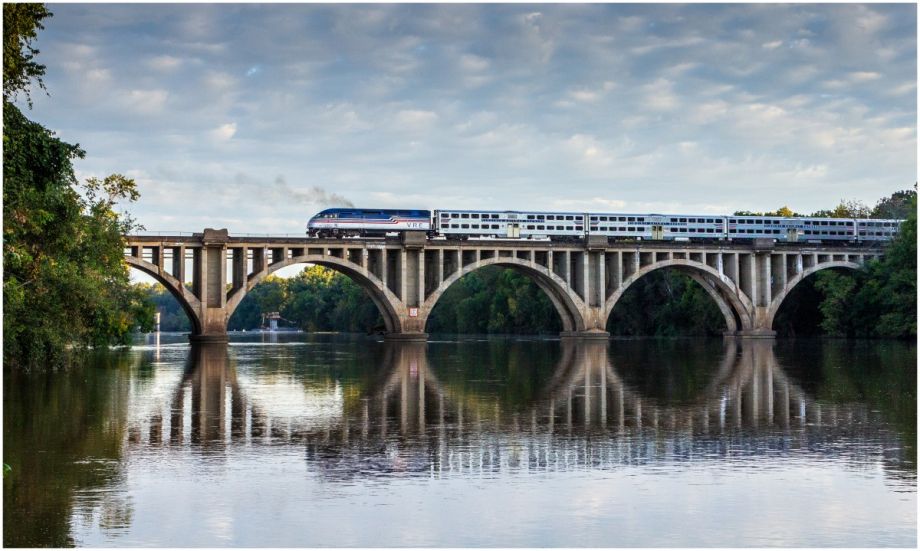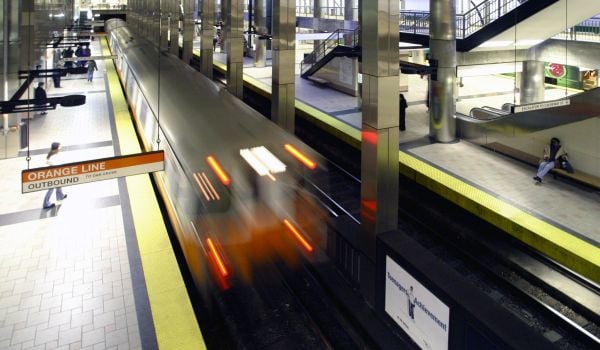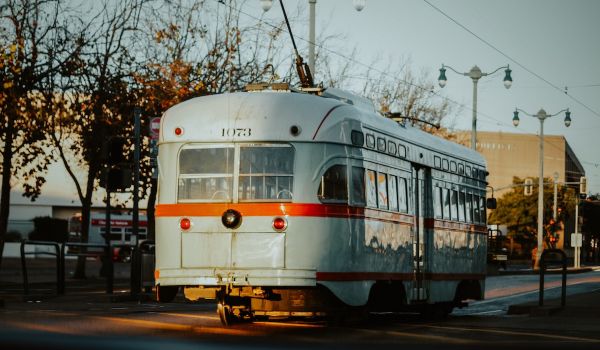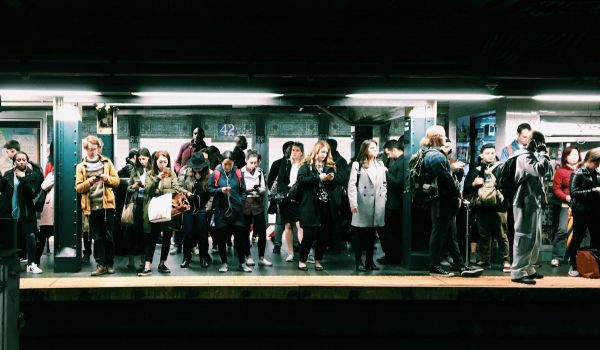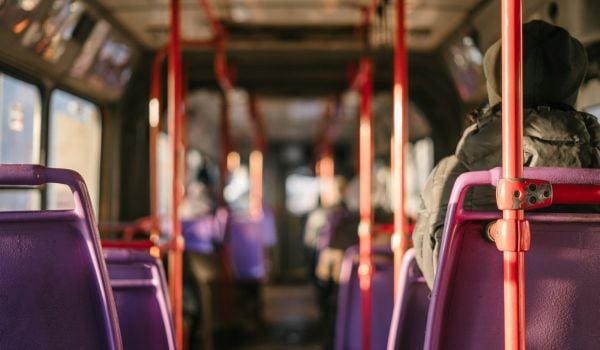Welcome to “The Mobile City,” our weekly roundup of noteworthy transportation developments.
This columnist, you may have noted, prefers to call what most Americans know as “commuter rail” by a different term: “regional rail.” As anyone who uses the commuter networks in New York, Boston or Philadelphia knows, the two are different creatures. In Philadelphia, whose transit agency already uses that phrase to refer to its suburban rail network, residents have access to regional trains throughout the day, at regular intervals, for nearly 18 hours a day.
That’s a far cry from the highly directional, peak-oriented service offered by most U.S. suburban rail systems. And a growing number of riders, planners and advocates say that running commuter rail the way they do in Europe, where regional trains operate frequently on multiple lines between core city and suburbs, would have a transformational effect on both metropolitan economies and the lives of city residents who lack convenient access to suburban job sites. That’s the argument business leaders in the Washington/Baltimore/Richmond region are using to make the case for turning the two commuter rail systems there into a single, seamless regional rail network.
Meanwhile, in Dallas, the nation’s largest light metro system, DART, has been working on a second route downtown for some time now in order to unclog the congested street-running segment downtown. The Dallas City Council has just signed off on the agency’s plan to build a new downtown subway, provided it can redesign one end of it in cooperation with neighborhood residents and business leaders who object to the current design. While the project may still be valuable even after a pandemic-induced drop in ridership, the vote also revealed some confusion over just what Dallas should be doing right now to improve transit service.
New York Times columnist Farhad Manjoo has an answer: Throw money at the buses. Buses trigger status anxiety in the minds of many Americans, which is one reason why rail transit proposals tend to garner more enthusiastic support from the public than proposals to improve bus service do. But many now argue that the money we spend on improving mass transit would be better spent beefing up bus service than laying more track. Manjoo says that the Biden Administration’s clear interest in dramatically improving the quality of mass transit service presents a golden opportunity to do so faster and for far less money than building lots of rail (or road) infrastructure would cost.
DMV Business Leaders Say It’s Time for a Unified Regional Rail Network; Civic Leaders Say It’s Time to Make the Metro Free
One problem several of our largest metropolises have is: Their territory extends across state lines, but their transit systems don’t. While this may not pose much of a problem for riders in one state who simply ride into the core city center on a service run by an agency in their state, it does make getting around the entire region more complicated than it ought to be.
That’s the case for regional rail in the Washington-Baltimore conurbation. Even though Washington’s rapid-transit system makes getting around “the DMV” a breeze, the regional rail lines operated by the states of Maryland and Virginia could make getting around a much larger region, extending all the way from the Susquehanna River in northeast Maryland to the James River in central Virginia and as far west as West Virginia, just as convenient if only the services were run as a unified whole.
The Greater Washington Partnership, an alliance of business leaders from Baltimore to Richmond, has taken it upon itself to push for that unification. The group says that its “Capital Region Rail Vision” would create a stronger regional economy, increase rail ridership and increase access to both jobs and affordable housing for the region’s Black, Hispanic and lower-income residents.
Key elements of the vision include through-running of Maryland Area Rail Commuter (MARC) and Virginia Railway Express (VRE) trains, a single unified fare and operational structure for both services, and dramatically increased frequencies and hours of service, including all-day service on both MARC and VRE, night and weekend service, and 15-minute-or-shorter intervals between peak-hour trains. In short, the partnership seeks to turn what is now two commuter rail services into a true regional rail network along the lines of those serving New York and Philadelphia.
A Washington Post story on the proposal asks whether this vision is achievable but notes that the stars appear to be lining up favorably. Maryland officials have already pledged to pursue through-running of MARC trains into Virginia, Virginia is committed to making rail transit a higher priority in state transportation planning, and the heads of the transportation departments in both states and the District of Columbia are on record as supporting the idea.
The price tag for all this? $23 billion, according to the Post article. That amount includes $14 billion worth of infrastructure improvements, including two bottleneck-removal projects already in the works: a second Long Bridge across the Potomac and replacement of the ancient and deteriorating Baltimore & Potomac tunnels west of Baltimore Penn Station.
There’s no price tag as of now for making Washington’s Metro system free, but NBC4 Washington (WRC-TV) reports that some local officials and riders say that’s what’s needed, at least for now, to bring riders back to the trains and buses.
Alexandria Mayor Justin Wilson is quoted in the story as saying that picking up the tab for free transit service poses less of a challenge now than it would have one year ago. Noting that the buses have been fare-free for most of the pandemic, he told NBC4, “Right now, I can say in Alexandria, funding that, if you will, is not as big of a nut as it was a year-and-a-half ago.”
The Washington Metropolitan Area Transportation Authority says that it has lost as much as $2 million a day in fare revenue due to reduced ridership during the pandemic.
Dallas Council OK’s DART Downtown Subway — With a Caveat
Both Railway Age and sister publication Railway Track & Structures report this week on the Dallas City Council’s vote to support the construction of a downtown subway tunnel for Dallas Area Rapid Transit (DART) light-rail trains.
The subway project, known as “D2,” would eliminate a bottleneck that has trains on DART’s four lines through downtown Dallas crawling along Pacific Avenue and Bryan Street downtown. The D2 subway will carry two of the four lines under Griffin and Commerce streets, with three new underground stations, one new surface stop and a fifth new station replacing the present Deep Ellum station.
In the works since 2007, the second downtown route for DART trains is portrayed by DART officials as key to making both downtown Dallas and the Dallas side of the Dallas-Fort Worth Metroplex easier to get around and environmentally sounder.
“The DART D2 Subway is an important regional project,” DART Board of Directors Chair Paul N. Wageman said in a statement appearing in both reports. “The second light rail alignment through downtown Dallas is a long-term investment in mass transit to support the city’s and the region’s goals of a more walkable, transit-oriented and sustainable region. …
“The next several months will be focused on continuing the collaborative, multi-agency effort among DART, the City of Dallas, the North Central Texas Council of Governments and TxDOT to evaluate any proposed refinements, enhancements, and/or modifications to the east end of the corridor in coordination with stakeholders. The DART Board appreciates the Dallas City Council’s continued support of this transportation initiative.”
That part about “modifications to the east end of the corridor” brings up the wrench that has kept this project from advancing faster.
D Magazine’s report on the vote calls it a decision “that gives a startling look at the dysfunction that plagues transportation planning in this town.” In giving the D2 tunnel its blessing, Dallas City Council also required that DART sit down with Deep Ellum residents to produce a tunnel portal and station the neighborhood could live with. The neighborhood just east of downtown Dallas is a renowned entertainment district that was once home to a sizable Black population but has since been repopulated with more affluent white residents.
D’s history of the D2 project notes that the city originally called on DART to build a subway once traffic warranted one back in 1990. But in 2015, a few years after that threshold had been crossed, the agency submitted a proposal for a second surface route to the city instead. That proposal would have closed one downtown street to other traffic completely, and the plan didn’t sit well with city residents who wore T-shirts to meetings asking the agency, “Can you dig it?” Then, once DART did submit a subway plan, it failed to comply with city requests to submit designs for Council and public review as work progressed, opting instead to release plans only as a deadline for obtaining federal funding loomed. The council’s vote this week was intended to enable DART to beat that deadline.
Furthermore, the article notes, some Council members aren’t even certain that D2 should be the city’s top transit priority right now. Councilmember Cara Mendelsohn, who represents a district in affluent North Dallas, said at the meeting where Council took its vote, “I don’t think a single one of us would say, ‘Oh, D2 is our pressing issue.’” According to the magazine, she would prefer that DART improve service for its transit-dependent riders first. (The article notes that DART is working on a bus network redesign that should increase bus frequency; the reworking is set to be implemented next year.)
Council gave DART one year to work things out in Deep Ellum. It plans to take another vote on the D2 project in 2022, and the outcome of that vote will depend on progress made on that matter.
Now’s the Time to Spend Big on Buses, Columnist Argues
“The Holy Grail of Transportation Is Right In Front of Us,” reads the headline over New York Times opinion columnist Farhad Manjoo’s March 18 column.
That Holy Grail, Manjoo argues, would instantly make getting around our cities faster, more convenient, and environmentally friendlier for millions more Americans than doing so is now.
All it would take is $17 billion a year. That money, they argue, is all it would take to give every city of 100,000 or more in the United States bus service that people would want to use.
“All we’ve got to do is buy more buses, hire more bus drivers and, in some places, give buses special privileges on the road. All we’ve got to do is care enough to build bus systems that work,” they write.
Several obstacles stand in the way of achieving this transit nirvana, however. One is the heavy tilt of federal transportation funding towards projects meant to move cars. Another is the federal government’s willingness to pay to build transit systems but not help run them.
And then there’s the image problem buses have in the eyes of much of the public, even the bus riders themselves. Manjoo writes, “Buses are old and boring. They rarely attract champions in the media or in government. Even among riders, a kind of hopelessness clings to them. ‘We’ve lived with subpar service for so long that it’s hard for people to rally around improving it,’ an advocate told The Los Angeles Times in 2019.” (Perhaps ironically, Los Angeles is the city where bus riders did force improvements in bus service that caused ridership to soar, just as Manjoo argues that it will with this kind of investment. How quickly the riders and the Los Angeles Times forget.)
Manjoo’s conversion on this subject came on a visit to London last year, just before the pandemic hit. There, they encountered a city where buses traveled quickly on streets kept free of congestion thanks to a core-city congestion charge. And there were lots of them, too, enough to ensure very short waits on most lines. Bus stops displayed real-time next-vehicle information, fares were integrated with the Tube, and most of the buses ran on electricity or hydrogen fuel cells. “For many of my trips, the bus was my best option,” they write.
All of this is within reach of any American city willing to spend the money to produce it, they argue, and it doesn’t require the high-tech software the transportation network companies and transit-on-demand providers have invested in. All it would take is a large shove from Washington, which appears ready to provide it if only we could get this message to the people in charge.
Know of a development that should be featured in this column? Send a Tweet with links to @MarketStEl using the hashtag #mobilecity.

Next City contributor Sandy Smith is the home and real estate editor at Philadelphia magazine. Over the years, his work has appeared in Hidden City Philadelphia, the Philadelphia Inquirer and other local and regional publications. His interest in cities stretches back to his youth in Kansas City, and his career in journalism and media relations extends back that far as well.
Follow Sandy .(JavaScript must be enabled to view this email address)

